Year 1
The English curriculum is built around the three interrelated strands of language, literature and literacy. Teaching and learning programs should balance and integrate all three strands. Together, the strands focus on developing students' knowledge, understanding and skills in listening, reading, viewing, speaking, writing and creating. Learning in English builds on concepts, skills and processes developed in earlier years, and teachers will revisit and strengthen these as needed.
In Year 1, students communicate with peers, teachers, known adults and students from other classes.
Students engage with a variety of texts for enjoyment. They listen to, read, view and interpret spoken, written and multimodal texts designed to entertain and inform. These encompass traditional oral texts including Aboriginal stories, picture books, various types of stories, rhyming verse, poetry, non-fiction, film, dramatic performances and texts used by students as models for constructing their own texts.
The range of literary texts for Foundation to Year 10 comprises Australian literature, including the oral narrative traditions of Aboriginal and Torres Strait Islander Peoples, as well as the contemporary literature of these two cultural groups, and classic and contemporary world literature, including texts from and about Asia. Literary texts that support and extend Year 1 students as independent readers involve straightforward sequences of events and everyday happenings with recognisably realistic or imaginary characters. Informative texts present a small amount of new content about familiar topics of interest and topics being studied in other areas of the curriculum. These include decodable and predictable texts which present a small range of language features, including simple and compound sentences, some unfamiliar vocabulary, a small number of high-frequency words and words that need to be decoded phonically, as well as illustrations and diagrams that support the printed text.
Students create a variety of imaginative, informative and persuasive texts including recounts, procedures, performances, literary retellings and poetry.
(source: www.australiancurriculum.edu.au)
Achievement Standard
Receptive modes (listening, reading and viewing)
By the end of Year 1, students understand the different purposes of texts. They make connections to personal experience when explaining characters and main events in short texts. They identify that texts serve different purposes and that this affects how they are organised. They describe characters, settings and events in different types of literature.
Students read aloud, with developing fluency. They read short texts with some unfamiliar vocabulary, simple and compound sentences and supportive images. When reading, they use knowledge of the relationship between sounds and letters, high-frequency words, sentence boundary punctuation and directionality to make meaning. They recall key ideas and recognise literal and implied meaning in texts. They listen to others when taking part in conversations, using appropriate language features and interaction skills.
Productive modes (speaking, writing and creating)
Students understand how characters in texts are developed and give reasons for personal preferences. They create texts that show understanding of the connection between writing, speech and images.
They create short texts for a small range of purposes. They interact in pair, group and class discussions, taking turns when responding. They make short presentations on familiar topics. When writing, students provide details about ideas or events, and details about the participants in those events. They accurately spell high-frequency words and words with regular spelling patterns. They use capital letters and full stops and form all upper- and lower-case letters correctly.
(source: www.australiancurriculum.edu.au)
- Plus Plan
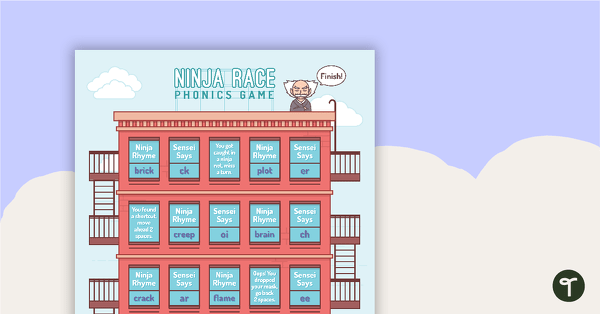
Ninja Race Phonics Game
A fun, engaging board game to consolidate students' understanding of digraphs and rhyme.
- Plus Plan
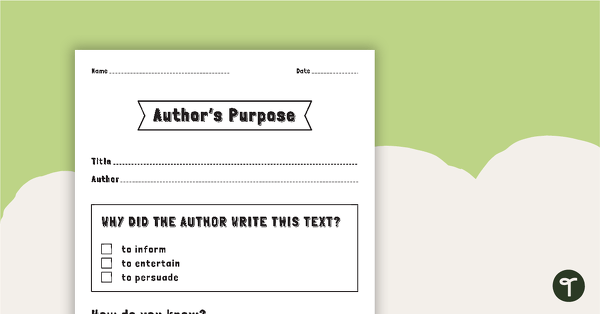
Author's Purpose Worksheet
A teaching resource to help teach your students the different reasons authors may write.
- Plus Plan
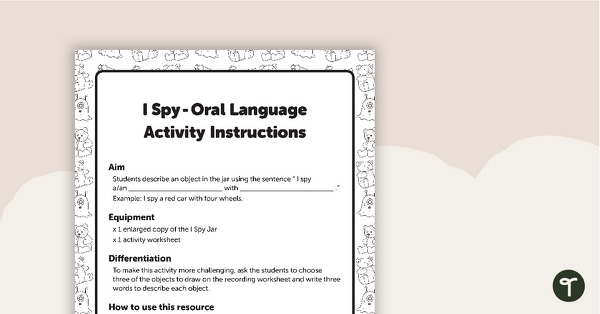
I Spy - Oral Language Activity
A fun activity to encourage the development of oral language.
- Plus Plan
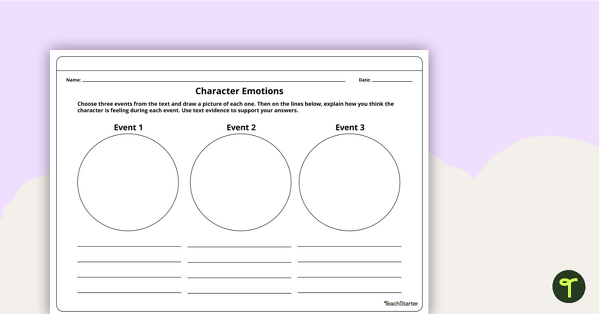
Character Emotions Worksheet
Make inferences about character's feelings with this one-page worksheet.
- Plus Plan
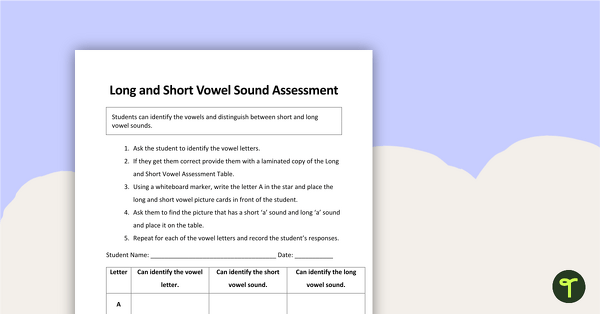
Long and Short Vowel Flashcards (Assessment Kit)
A set of 10 picture flash cards covering long and short vowel sounds and a teacher assessment tool.
- Plus Plan
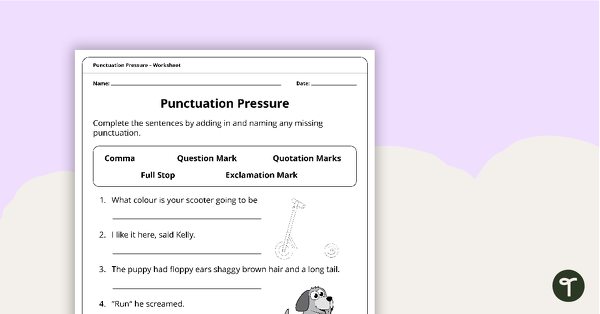
Punctuation Pressure Worksheet
A worksheet consolidating students' understanding of punctuation.
- Plus Plan
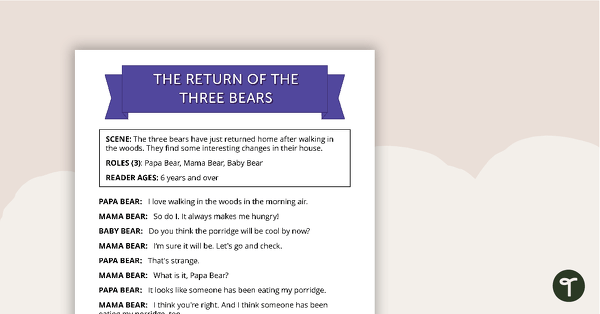
Comprehension - Return of the Three Bears
A fun script and set of questions to help students develop reading and comprehension strategies.
- Plus Plan
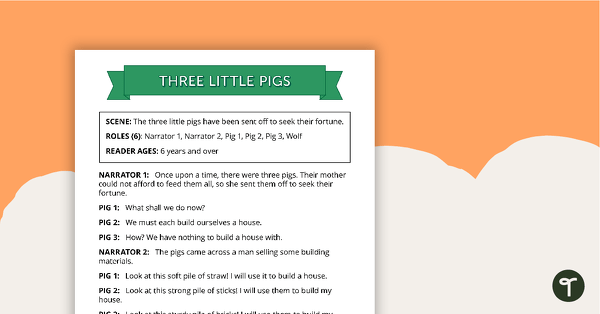
Comprehension - Three Little Pigs
A fun script and set of questions to help students develop reading and comprehension strategies.
- Plus Plan
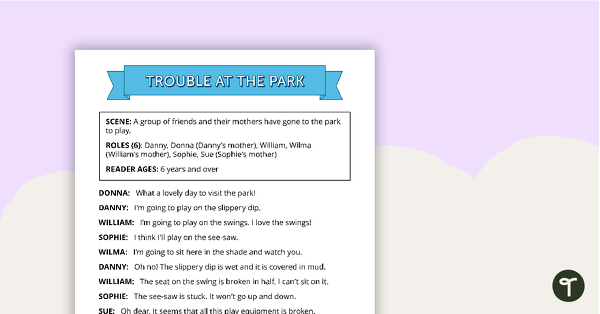
Comprehension - Trouble at the Park
A fun script and set of questions to help students develop reading and comprehension strategies.
- Plus Plan
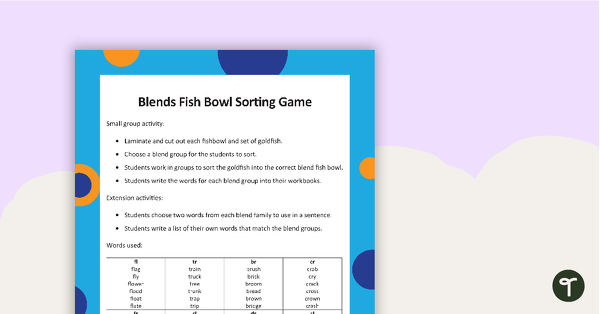
Consonant Blends Fishbowl Sorting Activity
A small group or whole class sorting game to consolidate the learning of beginning consonant blends.
- Free Plan

Activating Prior Knowledge - Comprehension Strategy Poster
A poster explaining how to activate prior knowledge before reading.
- Plus Plan
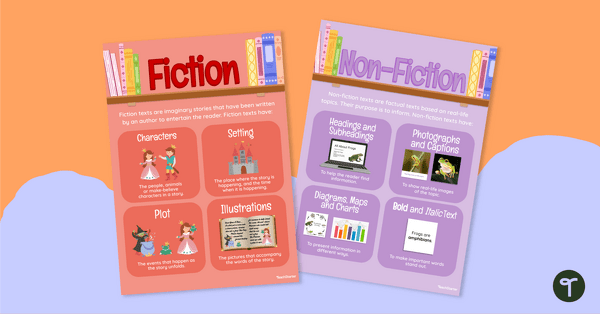
Fiction vs Non-Fiction Posters
Teach students the difference between fiction and non-fiction with this set of two classroom posters perfect for early years classrooms.
- Plus Plan
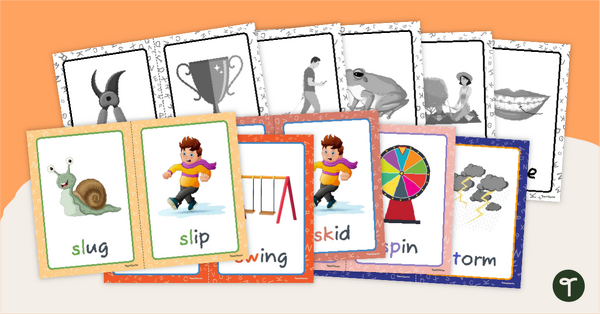
S-Blends Blending Flashcards
Practise blending s-blends with this set of blending s word cards.
- Plus Plan
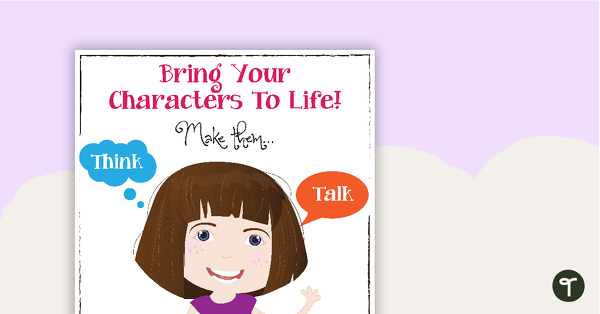
Bring Your Characters To Life Poster
A poster to remind your students to add detail and description to their writing to bring their characters to life.
- Plus Plan
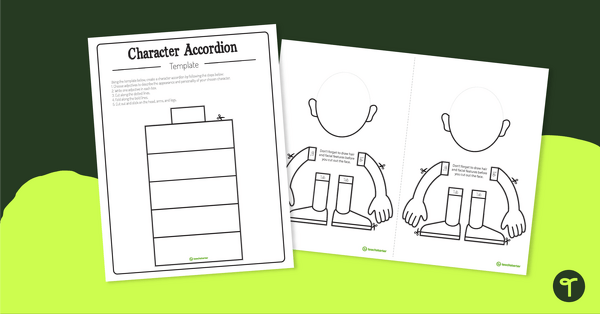
Character Adjective Concertina Template – Blank
Learn how adjectives can be used to describe a character's appearance and personality with a hands-on craft activity aligned to the English curriculum.
- Plus Plan
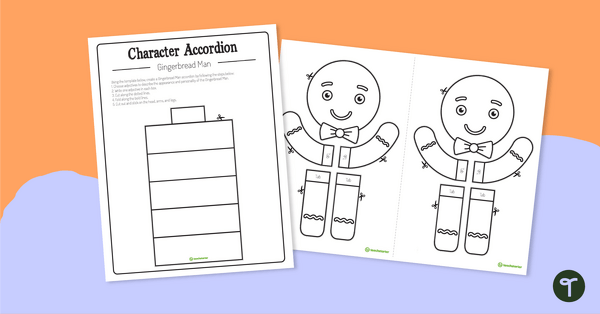
Character Adjective Concertina Template – The Gingerbread Man
Learn how adjectives can be used to describe a character's appearance and personality with a hands-on craft activity aligned to the English curriculum.
- Plus Plan
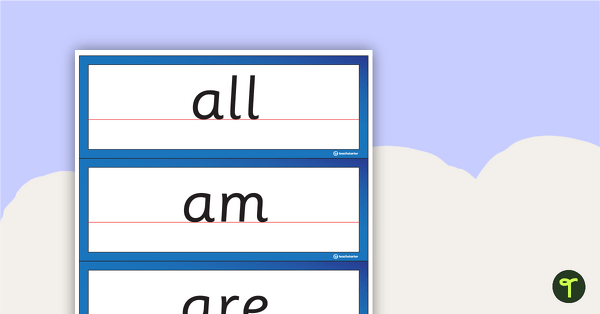
Sight Word Cards - Dolch Primer
Dolch primer sight words on flash cards.
- Plus Plan

Punctuation Sentence Challenge Worksheet
A teaching resource to help consolidate the students’ knowledge of punctuation.
- Plus Plan
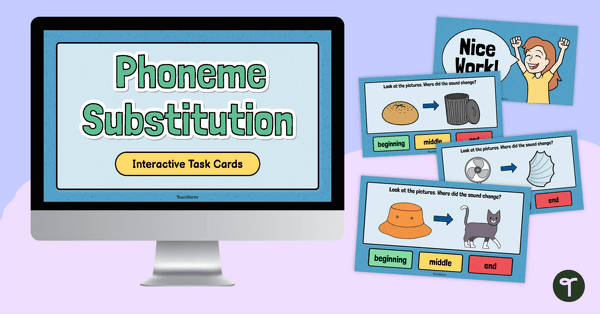
Phoneme Substitution Digital Activity
Explore phoneme substitution with your students using this interactive set of task cards using images.
- Plus Plan
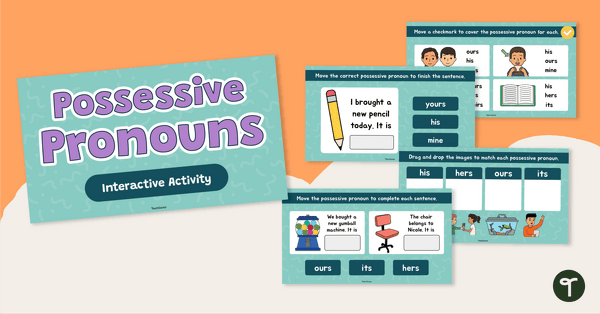
Possessive Pronouns Interactive Activity
Use these digital possessive pronouns exercises in your grammar lessons to give your students practice in using these essential parts of speech.
- Plus Plan
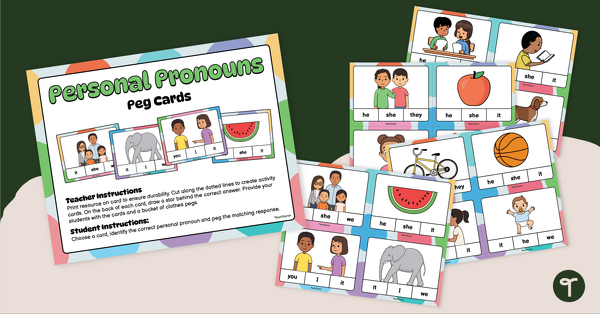
Personal Pronouns Peg Cards
Use these personal pronouns peg cards in your early years classroom when teaching students about parts of speech.
- Plus Plan
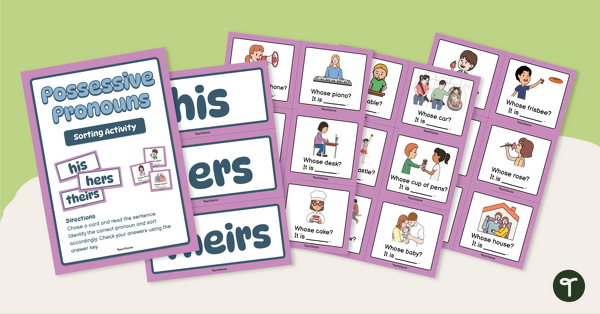
Possessive Pronouns Sorting Activity
Use this sorting activity in your grammar lessons to teach your students about possessive pronouns.
- Plus Plan

Story Bag Surprise - Story Elements Digital Activity
Introduce and explore different story elements with this story bag surprise digital activity for the whole class to enjoy.
- Plus Plan
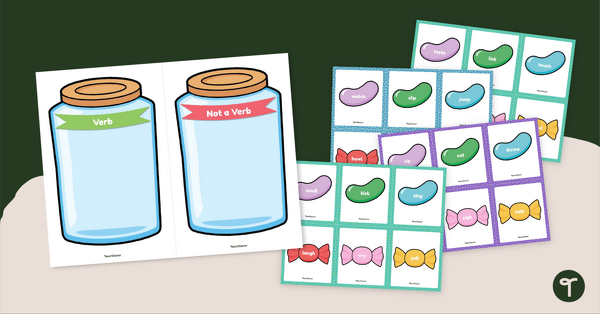
Verb or Not Sorting Activity
Allow students the opportunity to show their verb awareness with this verb or not a verb lolly sorting activity.
- Plus Plan
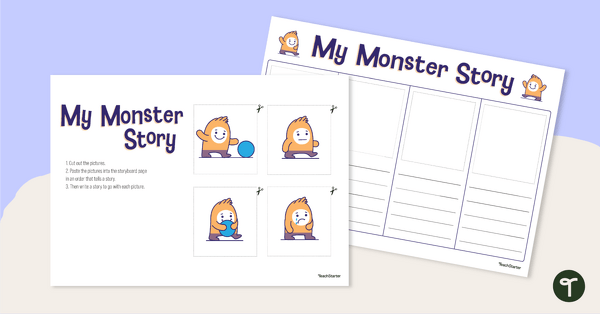
My Monster Story Template
Use this simple story template to get your students writing simple narratives based on a sequence of events.
- Plus Plan
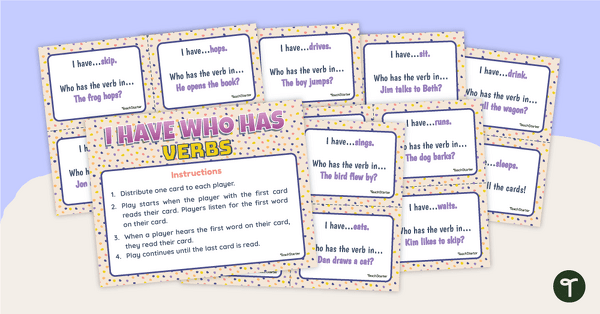
I Have, Who Has? Verb Card Game
Play a fun and exciting game that is great for students who are now learning how to identify action verbs.
- Plus Plan
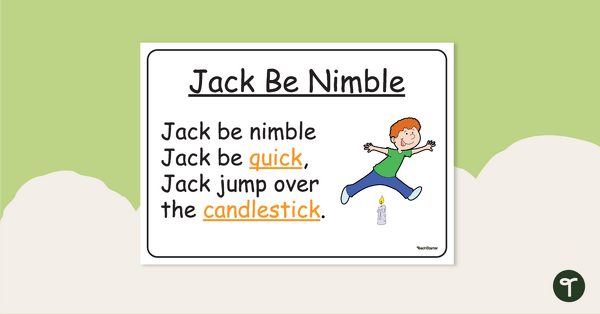
Jack Be Nimble – Nursery Rhyme Poster
Use this “Jack be Nimble” nursery rhyme poster to teach your youngest students about rhyme and rhythm.
- Plus Plan
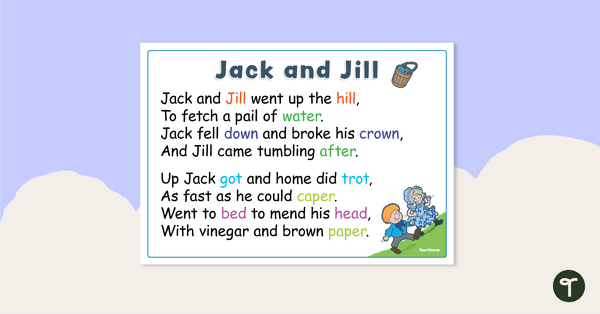
Jack and Jill – Nursery Rhyme Poster
Use this “Jack and Jill” nursery rhyme poster to teach your youngest students about rhyme and rhythm.
- Plus Plan
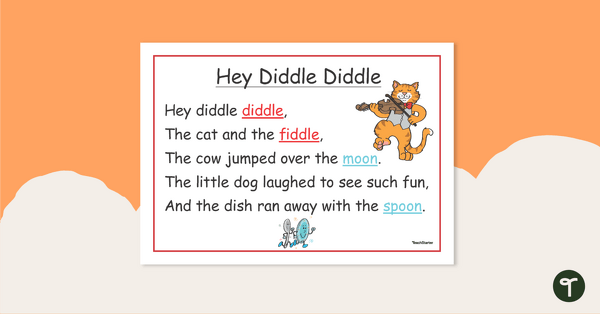
Hey Diddle Diddle – Nursery Rhyme Poster
Use this “Hey Diddle Diddle” nursery rhyme poster to teach your youngest students about rhyme and rhythm.
- Plus Plan
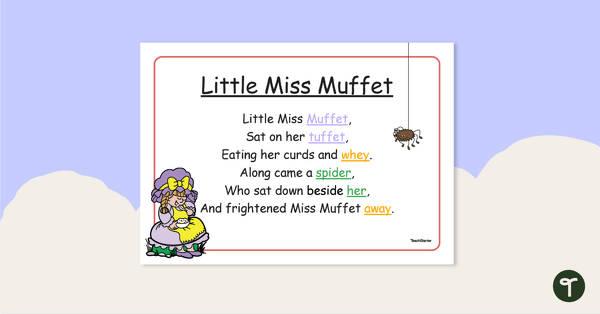
Little Miss Muffet – Nursery Rhyme Poster
Use this “Little Miss Muffet” nursery rhyme poster to teach your youngest students the features of rhymes.
- Plus Plan

Wee Willie Winkie – Nursery Rhyme Poster
Use this “Wee Willie Winkie” nursery rhyme poster to teach your youngest students about rhyme and rhythm.
- Plus Plan
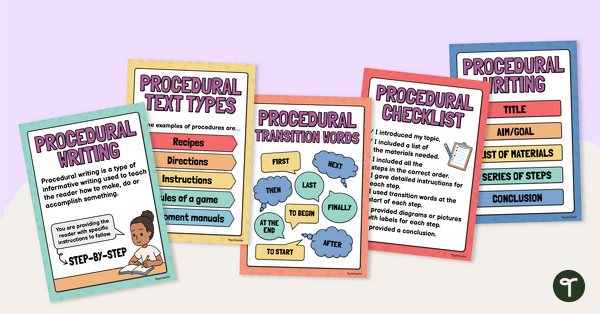
Procedural Writing Posters
Display this set of 5 procedural writing posters in your classroom during your procedural writing unit.